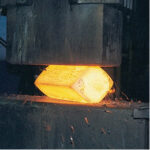Fluid mechanics is a branch of science, which deals with the fluids behavior in the rest position and in the motion too. The study of science deals with the kinematics, dynamics and statists. The fluids at the rest position are known as fluid statics. If the fluid is in motion without considering the pressure forces then it is known as fluid kinematics. In that study if we considered the pressure and the fluid is in motion then it is known as fluid dynamics.
Properties of the fluids:
Density
Specific weight
Specific volume
Specific gravity
Density
Density is also known mass density. It is defined as the ratio of mass of the fluid to volume of the fluid. Density is defines as the mass per unit volume of the fluid. The symbolic representation is ‘ρ’. In liquids density of the liquids are constant but in case of gases we can notice the variation in the temperature and the pressure.
ρ = Mass of the fluid/ volume of the fluid
In SI units they are measured in 
Water density is 1000 kg/ or 1 
Specific weight
Specific Weight is also known Weight density. It is defined as the ratio of the weight of the fluid to volume of the fluid. The weigh per unit volume of a fluid is known as specific density. The symbolic representation is ‘w’.
w = weight of the fluid/ volume of the fluid
= (Mass of fluid) X Acceleration due to gravity/ volume of fluid
= Mass of fluid X g/ volume of fluid
= ρ X g
W = ρg
Specific density of water is 9.81 X 1000  the units are in SI units.
the units are in SI units.
Specific volume
Specific volume is defined as the ratio of volume of the fluid to mass of the fluid.
Specific volume = Volume of the fluid/ mass of the fluid

Reciprocal to the mass density is known as specific volume. The units are  . the specific volume must be applied to gases substance.
. the specific volume must be applied to gases substance.
Specific Gravity
Specific Gravity is also known as relative density. It is defined as the ratio of the weight density of the fluid to the weight density of the standard fluid. The standard fluid for liquids is water and standard fluid for gases is air. It is denoted with the symbol ‘S’.
For liquids specific gravity is S= weight density of the fluid (liquid)/ weight density of the standard fluid (Water)
For gases specific gravity is S= weight density of the fluid (gas)/ weight density of the standard fluid (air)
Density of liquid = specific gravity X Density of Water
= S X 1000 
Weight Density of a liquid = specific gravity X Weight density of Water
= S X 1000 X 9.81 
Density of mercury must be = 13600  .
.
Viscosity:
Viscosity is defined as the property of a fluid which offers resistance to the movement of one layer to another layer of the fluid. If the fluid is separated by a distance “dy” and they are moving with different velocities ‘u’ and ‘du’ the viscosity together with the relative velocity bases shear stress performing between the fluid layers. On the adjacent lower layer the top layer causes a shear stress but the lower layer causes a shear stress on the adjacent top layer. The shear stress must be proportional to the change of velocity with respect to the y. the symbolic representation of Viscosity is τ.
τ proportional (du/dy)
τ= μ (du/dy)
μ = τ/ (du/dy)
Units of Viscosity:
SI units = 
M.K.S. = 
C.G.S. = poise = 
1 poise = 1/10 N.S/m
Kinematic Viscosity:
Kinematic viscosity is defined as the ratio between the dynamic viscosity and density of fluid. It is represented by the letter ν.
ν = Viscosity/ density = μ/ρ
Units
S.I. Units = 
M.K.S. Units = 
C.G.S. Units = stoke = 
1 stoke = 10-4 
Newton’s law of Viscosity:
According to the newton’s law of viscosity the shear stress on the fluid element layer is directly proportional to the rate of shear strain.
τ = μ(du/dy)



